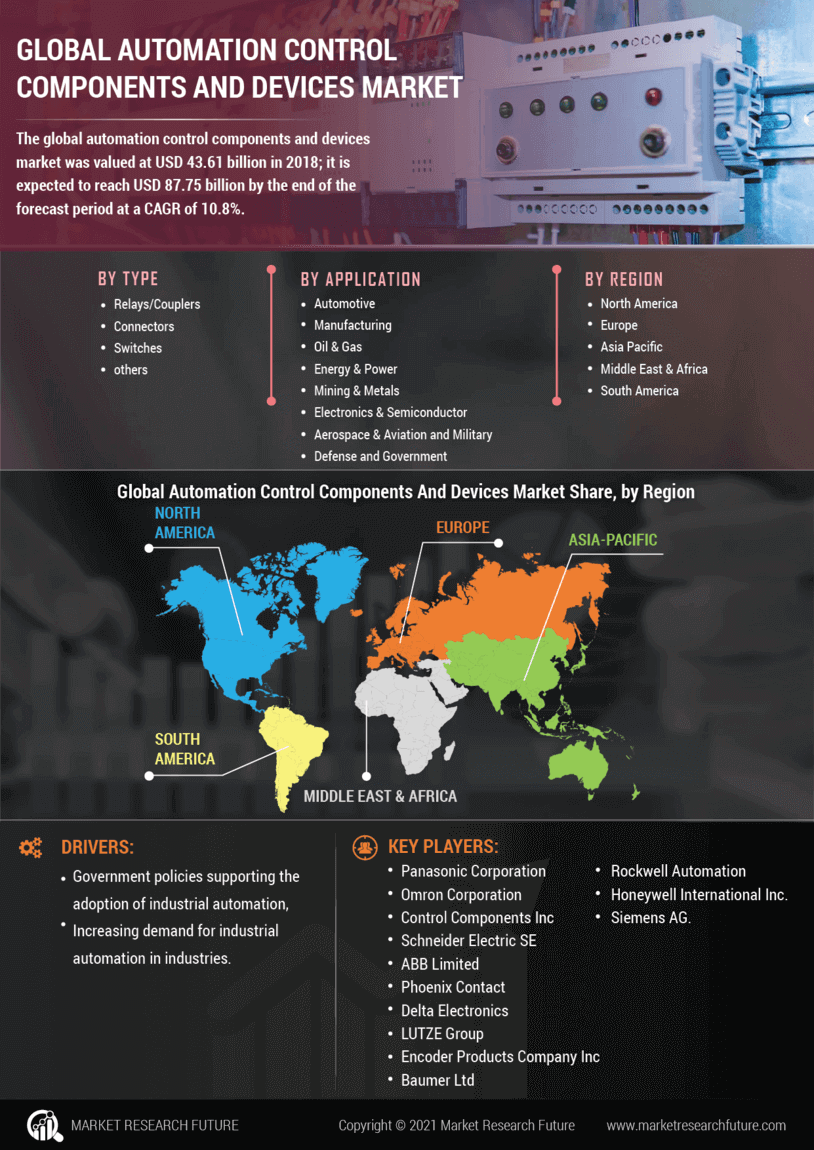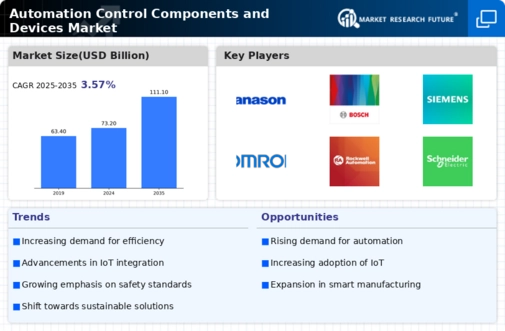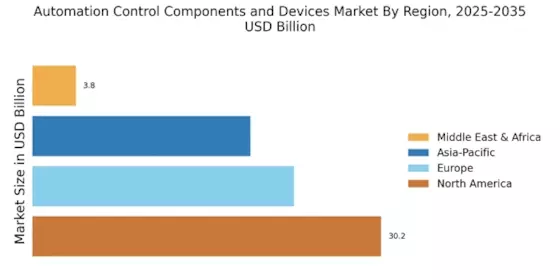Growing Adoption of Robotics and AI
The Automation Control Components and Devices Market is witnessing a growing adoption of robotics and artificial intelligence (AI) technologies. These innovations are revolutionizing traditional manufacturing and operational processes, enabling higher levels of automation and efficiency. Robotics are increasingly utilized for tasks such as assembly, packaging, and quality control, while AI enhances decision-making capabilities through predictive analytics. The market for industrial robots is projected to expand significantly, with estimates suggesting a growth rate of over 15% annually. This trend indicates a shift towards more intelligent automation solutions, positioning the Automation Control Components and Devices Market at the forefront of technological advancement.
Advancements in IoT and Connectivity
The integration of Internet of Things (IoT) technologies is transforming the Automation Control Components and Devices Market. Enhanced connectivity allows for real-time monitoring and control of industrial processes, leading to improved efficiency and reduced downtime. The proliferation of smart devices and sensors is facilitating this trend, enabling manufacturers to gather and analyze data more effectively. It is estimated that the IoT market in industrial applications will reach a valuation of several billion dollars by 2026, indicating a robust growth trajectory. This advancement in connectivity not only streamlines operations but also fosters innovation within the Automation Control Components and Devices Market, as companies seek to leverage data-driven insights for better decision-making.
Emerging Markets and Economic Growth
Emerging markets are experiencing rapid economic growth, which is positively impacting the Automation Control Components and Devices Market. As these economies develop, there is a corresponding increase in industrial activities and infrastructure projects, leading to heightened demand for automation solutions. Countries in Asia and Latin America are particularly notable for their investments in automation technologies, as they seek to modernize their manufacturing capabilities. The market in these regions is expected to grow at a compound annual growth rate of around 12% over the next five years. This economic expansion presents significant opportunities for the Automation Control Components and Devices Market, as companies look to capitalize on the increasing need for efficient and automated processes.
Increased Focus on Safety and Compliance
Safety regulations and compliance standards are becoming increasingly stringent across various industries, driving the demand for advanced automation control components. The Automation Control Components and Devices Market is responding to this need by developing solutions that enhance safety protocols and ensure compliance with regulatory requirements. Industries such as pharmaceuticals, food and beverage, and chemicals are particularly affected, as they must adhere to strict safety guidelines. The market for safety-related automation devices is expected to grow significantly, with projections indicating a compound annual growth rate of around 8% over the next few years. This focus on safety not only protects workers but also enhances operational reliability within the Automation Control Components and Devices Market.
Rising Demand for Automation in Manufacturing
The Automation Control Components and Devices Market is experiencing a notable surge in demand due to the increasing need for automation in manufacturing processes. Industries are increasingly adopting automation technologies to enhance productivity, reduce operational costs, and improve product quality. According to recent data, the manufacturing sector is projected to invest significantly in automation technologies, with estimates suggesting a growth rate of approximately 10% annually over the next five years. This trend is driven by the need for efficiency and the ability to meet consumer demands swiftly. As manufacturers seek to optimize their operations, the Automation Control Components and Devices Market is poised to benefit from this growing inclination towards automated solutions.

















Leave a Comment